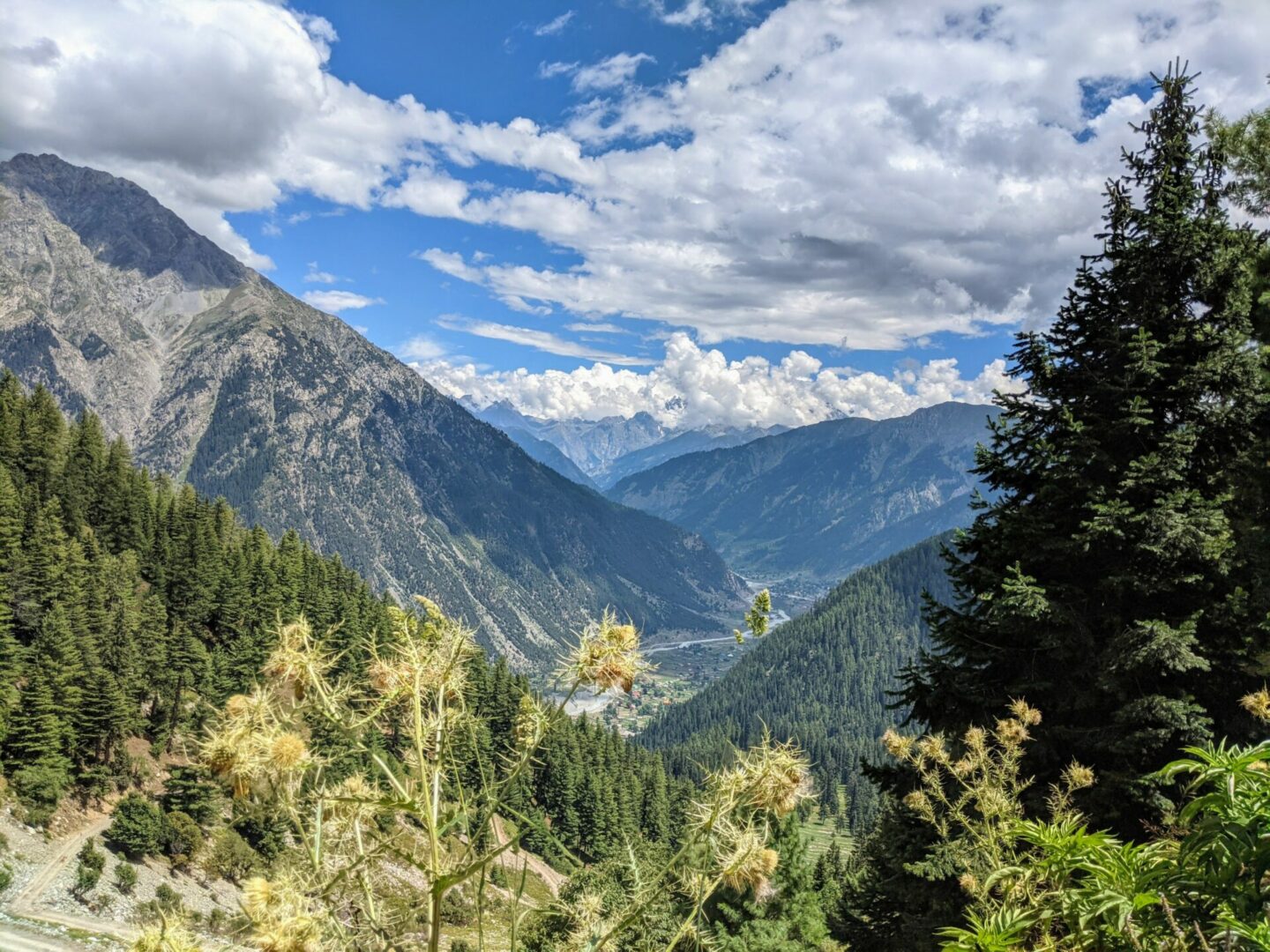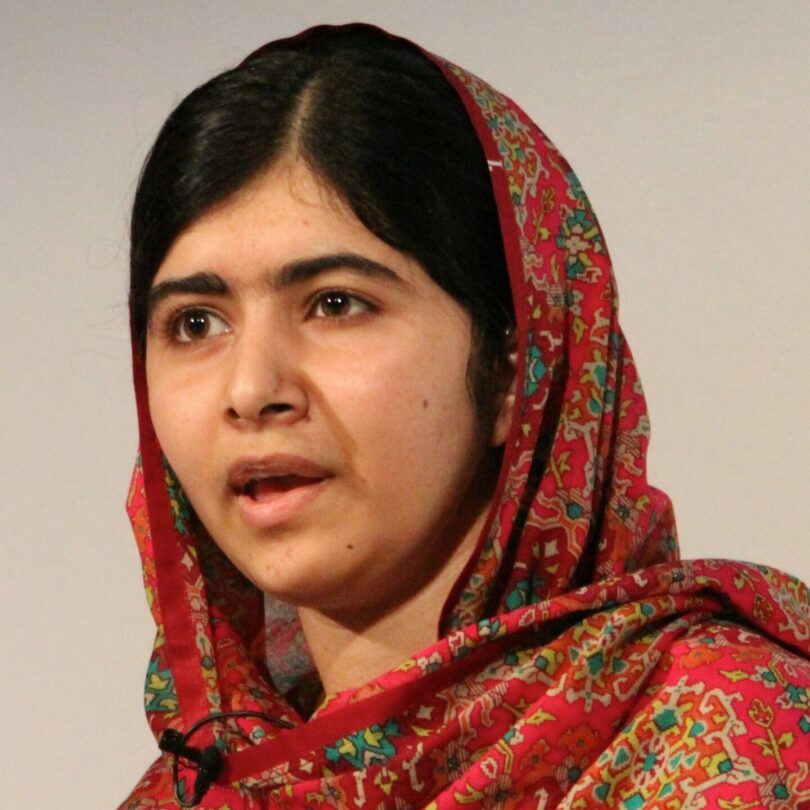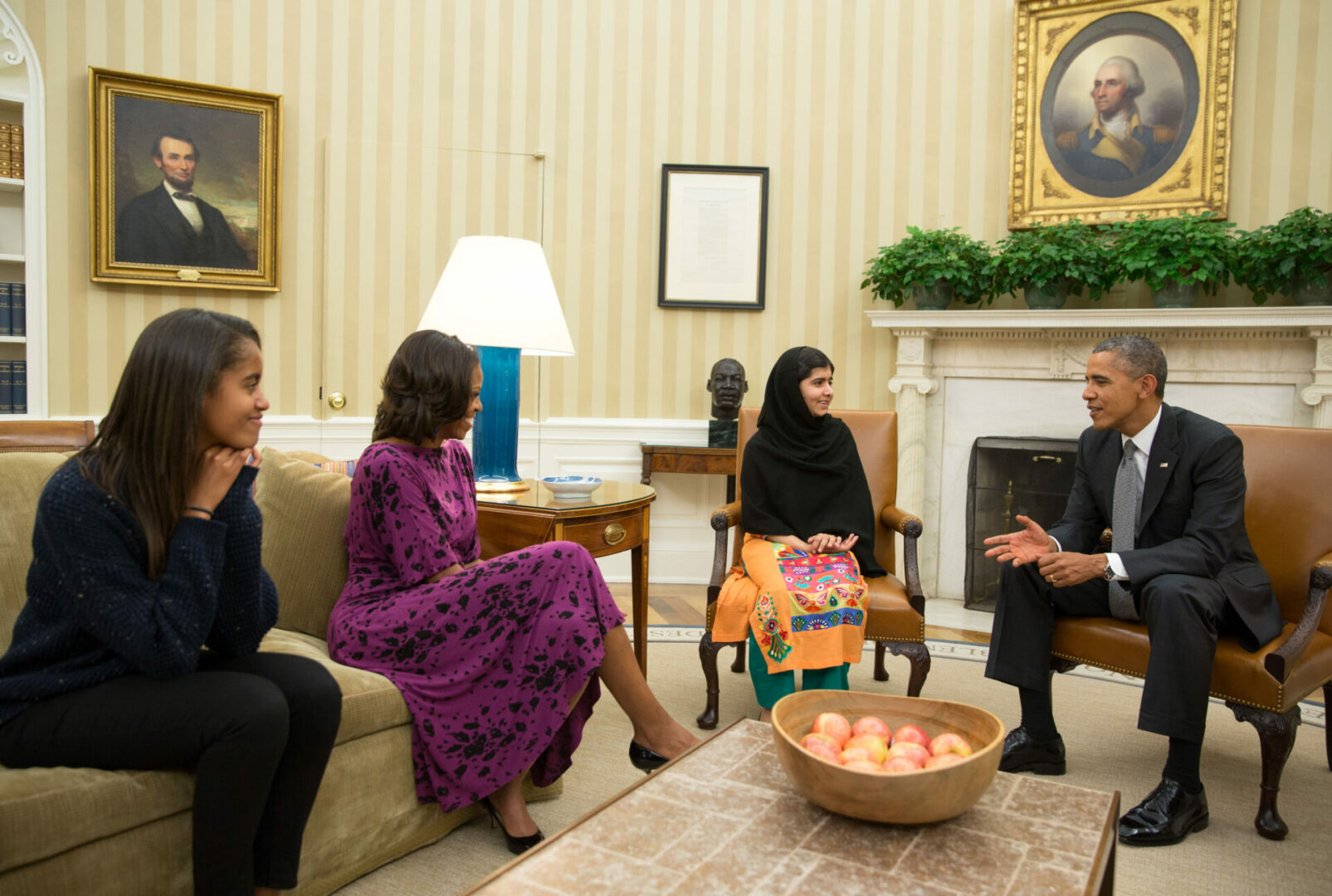Read more:
Nationality at birth: Pakistani (Pashtun ethnicity)
Toorpekai Yousafzai
 Father /President of the private schools in the Swat Valley and speaker of the Quami Jirga, the council of elders in Swat
Father /President of the private schools in the Swat Valley and speaker of the Quami Jirga, the council of elders in Swat
Ziauddin Yousafzai
Atal Yousafzai
Khushal Yousafzai
Asser Malik
Place of the fight for human rights: Districts in northwestern Pakistan
| Area | Type | From | To | Location |
|---|---|---|---|---|
| School | 2000 | 2012 (Vague dates due to the war in Pakistan) | Swat valley | |
| Studies | Philosophy, Politics and Economy | 2017 | 2020 | Lady Margaret Hall College Oxford |
UN Messenger of Peace
Location: WorldwideReason for entry:
Function / Activity: Safeguarding educational opportunities and equal rights for girls worldwide
Malala Fund
Location: WorldwideReason for entry:
Function / Activity: Safeguarding educational opportunities and equal rights for girls worldwide
Leitmotif
Malala’s leitmotif is the fight for the right to education for girls in Pakistan, as well as the resistance against the Taliban and against the closure of girls’ schools in Pakistan.
How did the story become known?
Malala became known through an attempted assassination on October 9, 2012 by the Taliban in Mingora. In addition, her diary was widely read around the world under her code name “Gul Makai” (to protect her from the Taliban).
When did the story become known?
The attempted assassination on October 9, 2012 made Malala Yousafzai sudden known worldwide.
Prizes, Awards
Many international awards, including
- International Children’s Peace Prize 2013
- Nobel Peace Prize 2014, the youngest winner of all time
Literature (literature, films, websites etc.)
In 2009, a documentary film about her was made under the direction of Davis Guggenheim entitled: “Malala – Her Right to Education” (original title: “He named me Malala”)
Own works
Yousafzai, M., & Lamb, C. (2013). I Am Malala: The Story of the Girl Who Stood Up for Education and Was Shot by the Taliban. Little, Brown and Company.
BBC News (2009). Diary of a Pakistani schoolgirl. (last retrieved on 28.11.2023)
- Personality
- Family environment
- Education
- International media
Right to life, freedom and security
Right to education and training

INTRODUCTION
In 2007, the Swat Valley was occupied by the Taliban. Malala described her former home as a paradise with waterfalls, lakes and Buddha statues that were strongly linked to the history of her country.[1] The Taliban destroyed much of the former paradise and changed the Swat Valley. It became a place where public floggings, curfews, assassinations and the suppression of certain Pashtun traditions were the order of the day.[2] Hardly anyone tried to rebel against the Taliban, not even after the assassination of the democratic politician Benazir Bhutto. On the contrary, people adapted to the Taliban’s rules, women’s rights were more restricted and hopelessness spread in Pakistan. When the Taliban started closing down all girls’ schools in the Swat Valley, Malala began her resistance struggle to fight for girls’ education in Pakistan. [3]
THE STORY
“The girl the Taliban wanted to shoot for fighting for the right to education” [4]
Malala Yousafzai was born on July 12, 1997 in the town of Mingora in the Swat Valley. In the tradition of her people, the Pashtuns, the birth of a daughter is seen as a dark day that should not be celebrated. However, Malala’s parents and especially her father Ziauddin were very happy about her birth, contrary to Pashtun tradition.[5]
Malala was no ordinary Pashtun since her childhood and decided at an early age not to follow the traditions of her country. One of these traditions was that girls and women were not allowed to leave the house unaccompanied by male relatives. Their functions were traditionally limited to household chores and preparing meals. Malala followed her own ideas because she believed that part of these traditions were responsible for the way men treated women. [6] Many Pashtuns did not approve of this and complained to her father, but he supported his daughter’s behavior.[7]
This was not the only area where her father differed from others; he was also very appreciative in his dealings with her mother.[8] When the family faced challenges and problems, he often asked her mother for advice and made decisions based on her opinion. [9] Moreover, Ziauddin believed that education was the greatest good for all and should be made accessible to all children, both rich and poor. For him, the lack of education was one of the main reasons for many of Pakistan’s problems.[10]
“School was my world, and my world was school.” [11]
Education was also very important to Malala. When she was three years old, her family lived directly above the school that her father had founded. She accompanied him to lessons and played in the corridors outside the classrooms. Even as she grew older, she enjoyed going to school and won many prizes in school competitions and speeches. In the Swat Valley, girls were free because they were allowed to go to school. In Afghanistan, many girls’ schools were destroyed under Taliban rule. They had to live according to Taliban customs. Part of this included the ban on dancing, the ban on laughing and wearing certain clothes or certain beard lengths. [12]

Image 1: Malala Yousafzai at the Girl Summit 2014, © Russell Watkins/Department for International Development
But the Taliban did not stay away from the Swat Valley for long.
At the beginning of October 2005, there was a severe earthquake in Pakistan. Many areas were destroyed and the country was in need of aid, including the Swat Valley. The Pakistani government offered little support and so aid organizations from abroad and Taliban volunteers came to Pakistan.
Islamic aid organizations, mostly radical movements whose aim was to spread their faith, made up the largest part. In the end, aid camps of extremist groups (including the Taliban) remained in the Pakistani areas destroyed by the earthquake. They took in orphans who had lost their families in the natural disaster and began to enforce Islamic law.[13]
The Taliban and the ban on girls’ schools
When Malala was 11 years old, the Taliban came to her valley. They were armed and wanted to introduce Islamic law. The hostility of the extremists increased daily and they began to burn and destroy television sets and all media that were supposedly un-Islamic.[14] The Taliban rulers exploited the ignorance of the people and spread false interpretations of the Koran via radio stations.[15] Many villagers began to follow the opinions and customs of the Taliban. Through terror and several suicide attacks in the Swat Valley and the surrounding area, the Taliban attempted to further expand their power. [16]
Under their rule, girls and women were forbidden the right to education and they began to destroy girls’ schools. [17]
Although school was no longer a safe place for Malala and her friends, they continued to go to school despite the danger. [18] Her father Ziauddin was also not intimidated by the Taliban and pursued the goal of educating the population about the truth and exposing the false interpretations of the Koran. He spoke out publicly against the Taliban in radio interviews.
Malala and her friends resisted by demanding girls’ school rights on a private TV channel and speaking out about the Taliban’s inhumane behavior. [19] Another means of resistance was the organization Open Minds Pakistan, founded by the Institute for War and Peace Reporting. It offered the girls the opportunity to write about the Taliban attacks, violence and floggings.
Malala also became a member of the District Child Assembly, a UNICEF organization, and used this to generate increased attention for her concerns and those of her school. At the monthly meetings, she campaigned in particular for an end to child labour and the reconstruction of all schools destroyed by the Taliban. She called for measures to be taken to enable homeless young people and children with disabilities to attend school.[20]
At the age of 13, Malala was the only one who continued to give interviews. Some of her friends withdrew due to fear of the Taliban or were prevented from doing so by their parents. Malala’s father always offered her great support, took care of her protection and encouraged her to continue. This led to her giving interviews for the largest cable TV channel, Geo. [21]
“If I am speaking for my rights, for the rights of girls, I am not doing anything wrong. It’s my duty to do so. God wants to see how we behave in such situations. There is a saying in the Quran, ‘The falsehood has to go and the truth will prevail.‘” [22]
The more interview requests Malala accepted, the stronger she felt in her actions.[23] One day, Malala’s father was contacted by a friend, a BBC radio correspondent, who wanted to report on life under the Taliban. He wanted to make the oppression of women an issue. Driven by the will to fight for the right to education, Malala began to write a diary. She wanted to tell the world what it was like to live under the Taliban. The diary or blog for the BBC ran under the pseudonym “Gul Makai” to protect her identity from the Taliban.[24]
“I began to see that the pen and the words that come from it can be much more powerful than machine guns, tanks or helicopters. We were learning how to struggle.And we were learning how powerful we are when we speak.” [25]
She raised her voice not only in talks with the American ambassador, Richard Holbrooke in Islamabad, when it came to the conflicts in Afghanistan and Pakistan. [26] She also spoke about the cruel events in her valley in a New York Times documentary program. [27] Her diary entries and her numerous interviews with Pakistani and international journalists have significantly supported her resistance. At the beginning of 2012, a school in Karachi, a middle school for girls, was even renamed after Malala. [28]
“They can’t stop me. I will get my education if it is at home, school or somewhere else. This is our request to the world — to save our schools, save our Pakistan, save our Swat.” [29]
But the day came when the Taliban tried to stop her. They had already threatened on the internet that they would kill her because she was spreading worldly thinking. [30] On October 9, 2012, on her way home from school, Malala was the victim of an assassination attempt. She was shot in the head by a Taliban and critically wounded. Due to her serious injuries, she had to be flown out to Birmingham (UK) after initial treatment in Pakistan. As a result of her media attention, many international doctors offered their help. [31]
The terrible assassination attempt by the Taliban did not cause hopelessness this time, as it did for Benazir Bhutto [32], but a large, global movement. Many donations and letters reached Malala during her stay in hospital, as her fate moved many people around the world. Malala became a celebrity.

Image 2: The former president of the USA, Barack Obama (right), First Lady Michelle Obama (second from left), and their daughter Malia (left) meet Malala Yousafzai (second from right) in the White House on 11 October 2013. (Official White House Photo by Pete Souza)
The UN Special Envoy for Education, Gordon Brown, launched the “I am Malala” campaign. His aim was to support and enable educational opportunities for girls from all over the world. Malala herself became a member of the Youth Education Crisis Committee through the United Nations. [33]
At the beginning of 2013, Malala was discharged from hospital with some remaining health problems and has been living in Birmingham ever since.
Malala Yousafzai was appointed UN Messenger of Peace in 2017. This makes her not only the youngest Nobel Peace Prize winner in the world, but also the youngest UN Messenger of Peace worldwide.
Malala continues her mission to fight for the global right to education for girls through her work with the Malala Fund and as a UN Messenger of Peace.
The Malala Fund is a non-profit organization founded by Malala Yousafzai and her father Ziauddin Yousafzai. The foundation campaigns for the right to education for girls all over the world.
A short excerpt from her speech to the United Nations in New York on July 12, 2013 (her 16th birthday) [34]:
“(…) Thousands of people have been killed by the terrorists and millions have been injured. I am just one of them. So here I stand. So here I stand, one girl, among many. I speak not for myself, but so those without a voice can be heard.
Those who have fought for their rights.
Their right to live in peace.
Their right to be treated with dignity.
Their right to equality of opportunity.
Their right to be educated.”
Author: Mona Hankewitz
Contact: info@buxus-stiftung.de
Images:
Header: The Swat Valley in Pakistan, Image by Usman Nasir on Unsplash
Portrait: Simon Davis/DFID
Image 1: © Russell Watkins/Department for International Development
Image 2: Public Domain, official White House Photography, taken by Pete Souza.
Image 3: © James Duncan Davidson
Footnotes:








